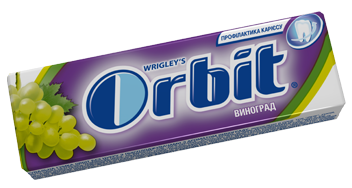
This image has format transparent PNG with resolution 352x188.
You can download this image in best resolution from this page and use it for design and web design.
Chewing gum PNG with transparent background you can download for free, just click on download button.
Chewing gum is a soft, cohesive substance designed to be chewed without being swallowed. Modern chewing gum is composed of gum base, sweeteners, softeners/ plasticizers, flavors, colors, and, typically, a hard or powdered polyol coating. Its texture is reminiscent of rubber because of the physical-chemical properties of its polymer, plasticizer, and resin components, which contribute to its elastic-plastic, sticky, chewy characteristics.
The cultural tradition of chewing gum seems to have developed through a convergent evolution process, as traces of this habit have arose separately in many of the early civilizations. Each of the early precursors to chewing gum were derived from natural growths local to the region and were chewed purely out the instinctual desire to masticate. Early chewers did not necessarily desire to derive nutritional benefits from their chewable substances, but at times sought taste stimuli and teeth cleaning or breath-freshening capabilities.Chewing gum in many forms has existed since the Neolithic period. 6,000-year-old chewing gum made from birch bark tar, with tooth imprints, has been found in Kierikki in Finland. The tar from which the gums were made is believed to have antiseptic properties and other medicinal benefits. It is chemically similar to petroleum tar and is in this way different from most other early gum. The Aztecs, as the ancient Mayans before them, used chicle, a natural tree gum, as a base for making a gum-like substance and to stick objects together in everyday use. Forms of chewing gums were also chewed in Ancient Greece. The Ancient Greeks chewed mastic gum, made from the resin of the mastic tree. Mastic gum, like birch bark tar, has antiseptic properties and is believed to have been used to maintain oral health. Both chicle and mastic are tree resins. Many other cultures have chewed gum-like substances made from plants, grasses, and resins.
Although chewing gum can be traced back to civilizations around the world, the modernization and commercialization of this product mainly took place in the United States. The American Indians chewed resin made from the sap of spruce trees. The New England settlers picked up this practice, and in 1848, John B. Curtis developed and sold the first commercial chewing gum called The State of Maine Pure Spruce Gum. In this way, the industrializing West, having forgotten about tree gums, rediscovered chewing gum through the First Americans. Around 1850 a gum made from paraffin wax, which is a petroleum product, was developed and soon exceeded the spruce gum in popularity. To sweeten these early gums the chewer would often make use of a plate of powdered sugar, which they would repeatedly dip the gum into to maintain sweetness. William Semple filed an early patent on chewing gum, patent number 98,304, on December 28, 1869.
In this clipart you can download free PNG images: Chewing gum PNG images free download